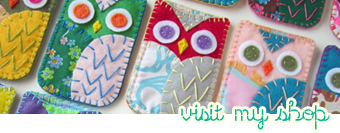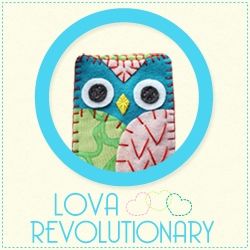By SAMANTHA CRITCHELL
AP Fashion Writer
NEW YORK (AP) - Ever wonder the difference between a sheath dress and a shift? An A-line and a trapeze?
The fashion world uses insider lingo like, well, insiders. But fashion is more democratic than that: We all have to get dressed and should know if we're wearing a cowl neck or a halter.
Here are some ABCs of the style lexicon:
_A
A-line: Skirt that is narrowest at the waist and then flares out along a straight line to the hem like a triangle _ or an A.
Anorak: Hooded jacket first known to be worn by Eskimos of the Arctic. It's often a pullover silhouette so it doesn't leave potential for a draft along a zippered or buttoned closure.
_B
Boatneck/Bateau: This neckline is named for its similarity in shape to a skimmer boat. It's a narrow opening in its width but extends almost shoulder to shoulder.
Bias cut: Fabric cut on approximately a 45-degree angle to create a clingy, draped effect. Madeleine Vionnet was considered queen of the cut in the 1920s, and it's still used today.
_C
Cowl: Draped, loose neckline with a cascading effect. It's possible to also have a cowl as the back of a dress _ a very sexy look.
Coco Chanel (1883-1971): One of the most famous names in modern fashion. Chanel's skirt suits _ with collarless jackets and braided chain hardware _ are still instantly recognizable and often imitated.
_D
Dolman sleeve: A sleeve that's wide at the armhole and narrows as it moves toward the wrist. It often creates the effect of a dropped shoulder.
D'Orsay: Shoe style resembling pumps but with a high vamp on the front of the foot and cutout sides, exposing the arch of the foot.
_E
Epaulet: Fabric tab that sits on the top of the shoulder; sometimes it's functional and can hold a rolled-up sleeve. It's a detail often found on military uniforms _ and military-inspired fashion.
Empire waist: This "waistline" hits well above the natural waist, sometimes right under the bust, creating an ethereal silhouette. It's popular for baby-doll tops, evening gowns and maternity clothes.
_F
Flannel: Soft, brushed-finish fabric, typically made of cotton or wool. It can be as tailored and refined as it is relaxed and outdoorsy.
Fishnet: A fabric, often used in lingerie or hosiery, with an open-mesh weave that resembles a fishing net.
_G
Madame Gres (1903-1993): The Parisian couturier considered the master of the bias cut is credited with adapting the modern goddess gown. Madame Gres was born Germaine Emilie Krebs but created her professional name based on an anagram of her artist husband's first name, Serge. He signed his work Gres.
Gauchos: Mid-calf length pants with wide legs fashioned after the South American cowboys who were also called gauchos.
_H
Haute couture: The French term for high fashion specifically refers to one-of-a-kind clothing produced by design houses that meet criteria established by the French Ministry of Industry. It's a protected appellation, similar to Champagne. However, the term is used colloquially to mean fancy, expensive fashion.
_Halter: Neckline to a sleeveless garment that leaves the shoulders _ and often the upper back _ exposed. There are different halter silhouettes but most either tie or have a strap that goes around the back of the neck.
_I
Ikat: Printed fabric based on a weaving technique native to Uzbekistan, in which a pattern is created from tie-dyed thread.
Indigo: Blue dye originally derived from plants in the pea family often used to color denim. The fashion world has adopted the word to describe deep blue colors with purple overtones.
_J
Jabot: Ruffled, sometimes-detachable neck collar that hangs down the front of a shirt or blouse. Historically men wore it on dress clothes, but it is now more common to women.
Jewel tones: Deep shades inspired by gems, including ruby red, emerald green and amethyst purple. No pastels here.
_K
Keyhole: Peek-a-boo opening that could be found on the neckline, front of a garment or the back. It's an oblong shape, as if to fit a key.
Knife pleat: Fold in the fabric that creates almost a fan effect. Knife pleats, versus more complicated accordion, box or inverted pleats, are the basic pleating technique in sewing.
_L
Le Smoking: Menswear-inspired outfit for women created by Yves Saint Laurent. The tuxedo silhouette was long and lean, and proved the beginning of an era of sexy, androgynous clothes.
Ralph Lauren (born 1939): One of the most successful U.S. designers, Lauren ranked 64th this year on Forbes' list of the richest Americans _ the same calendar year he celebrated 40 years in business. The polo pony logo is his signature, but his elegant sportswear look is almost as recognizable.
_M
Ali MacGraw (born 1938): Actress whose career heyday was the late 1960s-early '70s but has become a longtime _ and unlikely _ muse of the fashion industry. The preppy-meets-free-spirit style of "Love Story," her most enduring film, is repeatedly cited by designers as inspiration.
Mule: A backless shoe. This shoe style can be dressy or casual _ a pointy-toe high heel or a clog _ but the key is the open back.
_N
Nehru jacket: Fitted, single-breasted jacket with standup Mandarin or band collar. It's named after the late Indian prime minister Jawaharlal Nehru.
New Look: The 1947 ladies' silhouette by Christian Dior that ushered in a completely different post-World War II style.
_O
Ombre: Effect created by dip dyeing fabric with various gradations. It's sometimes called degrade, and the color will appear lighter in some spots and darker in others. It can be done with more than one color, but shading a single color is more common.
Organza: A sheer and delicate _ yet stiff _ fabric that is a signal for femininity and a certain level of dress.
_P
Portrait collar: An open neckline that is wider than it is deep. It provides both a frame and blank space around the face, drawing the eye upward.
Proenza Schouler: One of the first 21st century fashion labels to make a splash. Jack McCollough and Lazaro Hernandez sold their final project for Parsons School of Design to Barneys New York, and in 2007 they were named the best designers in womenswear by the Council of Fashion Designers of America alongside Oscar de la Renta.
_Q
Queen Victoria: The British monarch who saw from her throne the first traceable global fashion trends. Victorian style morphed from oversized crinoline-cage garments of the early 1800s to a sleeker, elongated shape.
Quilting: A sewing technique, initially used for bedding, that has found its way into popular fashion. Quilted garments have three layers, two pieces of fabric as well as insular batting inbetween. They are sewn together with visible _ and often artful _ stitching.
_R
Riding pants: Pants style with roomy hips but otherwise tight-fitting legs started as a practical silhouette for equestrians. Modern fashion has interpreted them to have an exaggerated shape. They're also known as jodhpurs.
Ruching: A detail of gathered fabric _ often at a seam and, in particular, on the sides of the bodice _ is considered a highly flattering touch because it creates intentional unevenness in fabric and camouflages what's underneath.
_S
Sheath: Dress silhouette that's long and lean with a nipped waist _ and usually without a waistband _ to create an hourglass shape. Its fashion opposite is the boxier, shorter shift dress that hangs from the shoulders and has a loose waist.
Spectator: Style of two-tone shoes. Men's spectators are typically wing-tips and women's are pumps with wing tip-style perforation and details.
_T
Tulip skirt: Skirt shape that highlights the hips, albeit with soft swaths of fabric. This skirt mimics an upside-down tulip, with a waist and hemline that are similar widths, and a bell effect in the middle.
Trapeze: A typically short dress style with narrow shoulders and a bodice that progressively flares out from there. It's a trapezoid shape, hence the name.
_U
Unitard: Tight-fitting body stocking covering legs, torso and probably arms _ essentially an all-over leotard. It's worn mostly by athletes and dancers, although it did have moments as a fashion item in the 1980s and '90s.
Utilitarian: A style of clothing that's actually practical, or at least inspired by practical clothing. Cargo pants, ripstop nylon and even hoodies are utilitarian details that have become fashionable.
_V
Versace: Milan-based fashion house known for super sexy styles _ worn by its jet-set fans. It was founded in 1978 by Gianni Versace; his younger sister Donatella took over as creative director when he was murdered in 1997.
Vintage: Term to describe clothes from another era. Antique clothes need to be more than 100 years old; vintage clothes are generally assumed to be newer but older than the most recent decade.
_W
Anna Wintour: The editor in chief of Vogue since 1988 is largely considered the most powerful person in fashion, making or breaking trends and careers. The British-born Wintour has recently committed to boosting young talent _ despite her reputation for being aloof.
Wash and wear: Clothes that literally can be cleaned with soap and water, dried and worn without ironing. It might not seem such a novelty now with high-tech fabrics, but that wasn't the case a generation or two ago.
_X
X-Ray (aka Social X-Ray): Term author Tom Wolfe coined for fashionable socialites who could never be too rich or too thin in his book "Bonfire of the Vanities."
X: The shape made in an argyle pattern as geometric diamonds are lined up in rows.
_Y
Yohji Yamamoto: One of the most respected names in Japanese fashion, with his signature being skewed proportions. Considered influential in the industry for years, he was introduced to the mainstream via his Y-3 collaboration with Adidas.
Yoke: A line, commonly across the shoulders or hips, that creates a more fitted shape to offset a potentially voluminous silhouette.
_Z
Zoolander: A 2001 movie starring Ben Stiller and Owen Wilson that parodies the fashion and modeling businesses. There are cameos by real-life fashion stars, including Tom Ford, Tommy Hilfiger and Heidi Klum.
Zebra print: Print that mimics the graphic black-and-white stripes of a zebra. It joins cheetah and leopard prints as trends that blossomed in the 1960s but have been used so often since then that they've become classics.
(Copyright 2008 The Associated Press. All rights reserved. This material may not be published, broadcast, rewritten or redistributed.)
http://www.wtop.com/?nid=773&pid=0&sid=1463371&page=1

































No comments:
Post a Comment